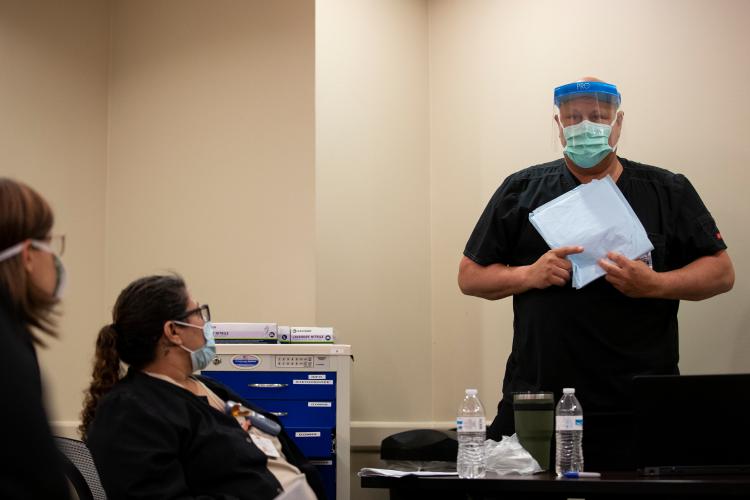
JPS Health Network emergency workers on Tuesday held a safety fair, honing their skills at donning and doffing their personal protective gear and properly preparing treatment areas to keep patients – and themselves – safe during the fight against COVID-19.
Properly using personal safety equipment is something JPS team members work on every day, according to Chris Cook, Manager of Emergency Services. But special circumstances call for additional precautions.
“It’s something we’re always working on,” Cook said. “But, because of COVID-19, things are evolving quickly, changing every day. So, we’re holding this safety fair as part of the process of making sure we’re all on same page as far as standards and procedures go.”

It is very important we review all of our procedures because the safety of our staff is foremost at hand. If you don’t have staff, you can’t take care of patients.”

JPS has about 300 emergency department employees who are expected to go through the safety refresher program, joined by team members from other departments who have volunteered to help the emergency staff handle increased patient volume. Cook said one of the things that is different than usual at the hospital is the creation of “clean” and “dirty” zones to make sure safety gear, paperwork or anything else that could have been exposed to COVID-19 doesn’t make it into sterile areas. To protect patients and staff, Emergency Services team members in the sterile area also have to learn to take care of cleanup work usually performed by environmental services because those people can’t go back and forth across the line.
Registered nurse Benjamin Smit, Quality Analyst for the Emergency Department at JPS, said the safety fair was divided into four stations. The first section was an explanation of personal protective equipment, the second station was about donning and doffing of protective gear. Station three was preparing and cleaning up treatment areas and the fourth stop was handling points of entry where patients are screened for potential COVID-19 exposure.
“Every person who interacts with every potential COVID-19 patient signs a log stating they interacted with a patient from examining them to transporting them to offering a glass of water so we do not miss any staff members who may have been exposed,” Smit said. “It is very important we review all of our procedures because the safety of our staff is foremost at hand. If you don’t have staff, you can’t take care of patients.”
